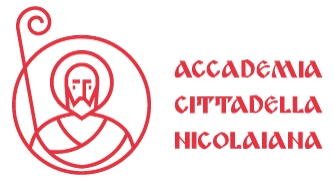The popularity of St. Nicholas in the World is also testified by the presence of thousands of churches dedicated to him. Here are some of the churches of St. Nicholas
Church of St. Nicholas of Weavers – Moscow
The Church of St. Nicholas in Khamovniki, also known as the Weavers’ Church, is a valuable example of late Moscow Baroque.
The church was built in 1682 by the weavers’ guild, where another church, probably built of wood, once stood.
The visitor can only be struck by the exuberance of the colors red and green, the unique golden onion domes, the imposing pyramid-shaped bell tower, the lush garden that surrounds the church.
Parish of San Nicola di Bari and Saint Peter the Martyr – Valencia
The Parish of St. Nicholas of Bari and St. Peter the Martyr in Valencia is one of the religious buildings most loved by visitors to the city. The Church is located in the Carmen district, in the heart of the historic city centre.
The 2,000 square meters of spectacular frescoes inside the church have earned it even the nickname of “Sistine Chapel of Valencia”.
The frescoes in the central nave depict scenes from the life of St Nicholas, as well as the life of St Peter, and are made by painting in the spaces available between the pointed arches.
Cathedral of Saint Nicholas of Bari – Alicante
The Cathedral of St. Nicholas in Alicante is a wonderful example of Herrerian or Escurial style. The peculiarity of the cathedral is the presence of a main nave surrounded by several chapels leaning against each other.
The altar in the central nave, in an unmistakable Baroque style, is dedicated to Saint Nicholas of Bari. The most appreciated element of the Church is the immense blue dome, 45 meters high, which acts as a light source on the central nave providing the white walls of the Cathedral a bright and brilliant appearance.
Church of St. Nicholas – Berlin
The church of St. Nicholas is the oldest church in Berlin. Today it is no longer a place of worship, but is used as a museum, namely the Museum Nikolaikirche. Despite this, valuable elements that betray the religious origin of the building are still visible.
Of particular interest are the two characteristic spires from which to admire the wonderful panorama of the historic centre of Berlin, the Renaissance altar with the painting of the Last Supper, the baptismal font dating back to the 14th century, the Baroque pulpit.




